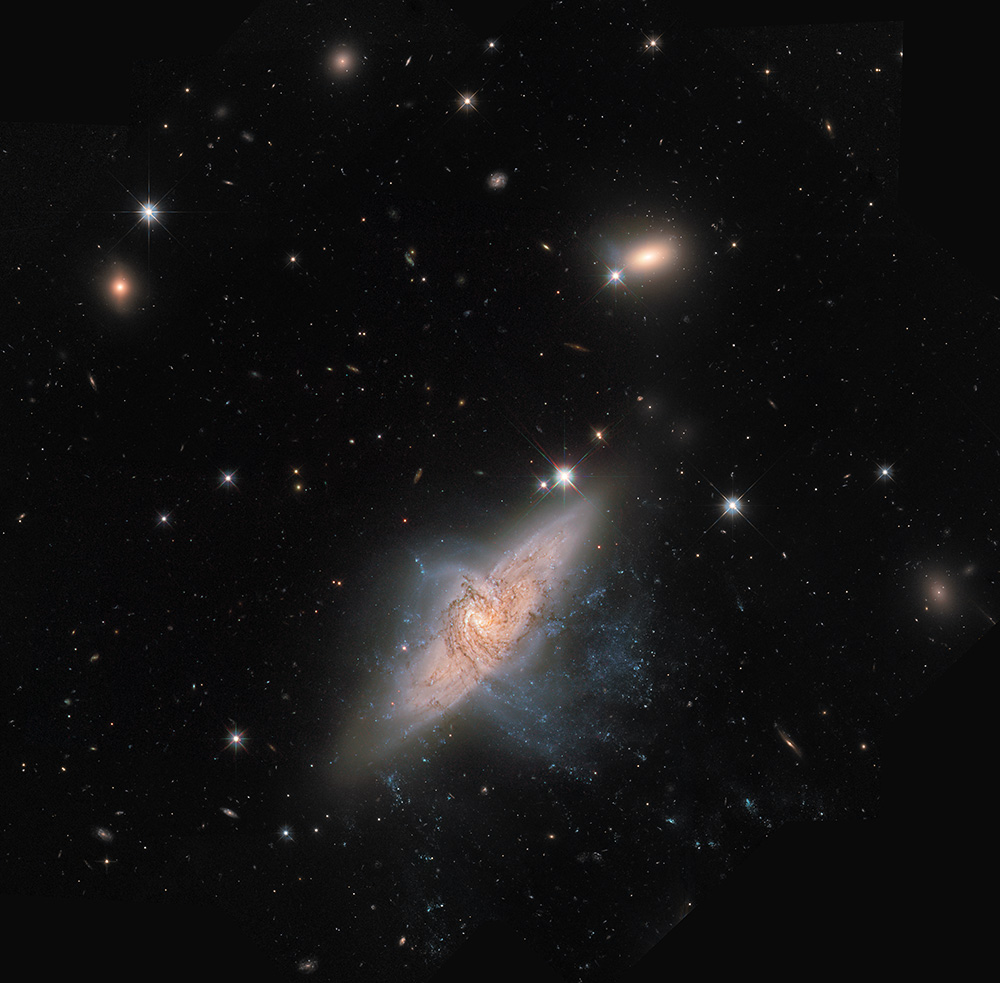
NGC 3314 (2015)
This is a fairly popular object to process and several others have done so. I went in wondering if I could add greater color dynamics by using some older WFPC2 near-infrared in addition to the current ACS imagery and almost gave up. No matter what I did with the image, it was still rather plain in coloration. Some galaxies are very easily colorful and varied but these two are not as much as one might guess. The foreground galaxies does have some slightly bluer stars strewn around, mostly to the southwest but I had to use a saturation modifier (which I try very hard to avoid) to even make the colors modestly noticeable.
I decided the best thing I could contribute here was to not crop away the rough edges. There are a lot of interesting background galaxies in the field and almost everyone cuts them off in order to showcase the overlapping pair NGC 3314a and b.
This image is possible thanks to the following two HST Proposals:
Gravitational Microlensing in the NGC 3314A-B Galaxy Pair
Dust Structure in Backlit Galaxies
Red: hst_06438_51_wfpc2_f814w_wf_sci + F606W / F475W ACS data where WFPC2 data was absent
Green: HST_MOS_5956_ACS_WFC_F606W_sci
Blue: HST_MOS_5956_ACS_WFC_F475W_sci
North is up.
Copyright information:
Hubble data is public domain, but I put a lot of work into combining it into beautiful color images. The minimal credit line should read: NASA / ESA / J. Schmidt

This work is licensed under a Creative Commons Attribution 3.0 Unported License.


